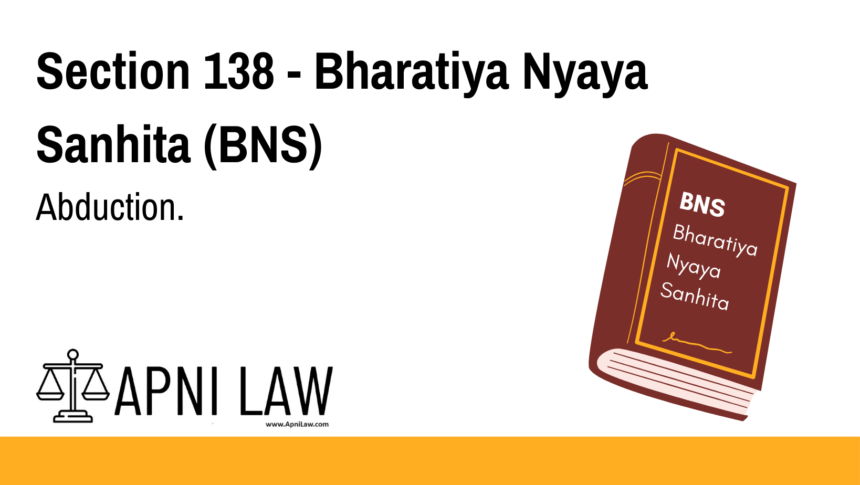Code :Section 138 BNS
Whoever by force compels, or by any deceitful means induces, any person to go
from any place, is said to abduct that person.
Explanation
Section 138 of the Bharatiya Nyaya Sanhita (BNS), 2023, defines the offense of abduction. The section specifies two key elements:
- By Force: The use of physical force to compel a person to move against their will.
- By Deceitful Means: Inducing a person to leave a place through trickery or deception.
This section plays a crucial role in distinguishing abduction from kidnapping (which generally involves minors or people taken out of lawful guardianship). Unlike kidnapping, abduction can occur at any age, provided force or deceit is involved.
Key Aspects:
- Force or Compulsion: If a person is physically compelled to move from one place to another.
- Deception or Fraud: If a person is misled into relocating under false pretenses.
- No Requirement of Age: Unlike kidnapping, abduction can involve individuals of any age.
Illustration
Example 1: Forceful Abduction
A group of criminals forcibly take a businessman from his office and transport him to an unknown location. This act falls under abduction by force under Section 138 BNS.
Example 2: Abduction by Deceit
A woman convinces a child that she is his mother’s friend and takes him to another city without informing his guardians. This is abduction by deceitful means under Section 138 BNS.
Example 3: Not Abduction
A friend persuades another to accompany them on a trip voluntarily without any deceit or force. This would not constitute abduction.
Common Questions and Answers
1. What is the difference between abduction and kidnapping?
Kidnapping generally involves minors or taking someone out of lawful guardianship, whereas abduction applies to all individuals and is based on force or deceit.
2. Can abduction happen without physical force?
Yes. If a person is deceived into leaving a place, it is considered abduction even without physical force.
3. What is the punishment for abduction under BNS?
The punishment depends on the intended purpose of abduction. If committed for ransom, harm, or other criminal motives, stricter penalties apply under different sections.
4. Is consent relevant in abduction cases?
If a person is forced or tricked, their consent is not valid under this section.
5. Can an adult be abducted?
Yes. Unlike kidnapping, abduction applies to any individual, regardless of age.
Conclusion
Section 138 BNS establishes a broad definition of abduction, ensuring legal action against those who force or deceive individuals into moving from one place to another. The law protects people from coercion and fraudulent schemes that could endanger their safety.
For more legal insights, visit ApniLaw! 🚀








